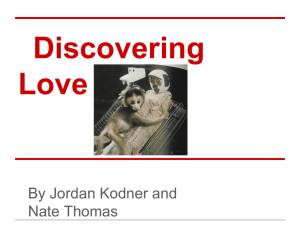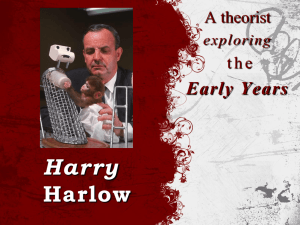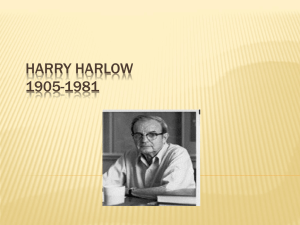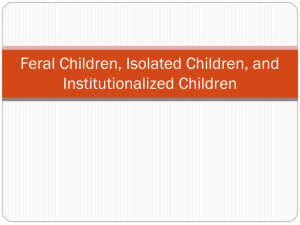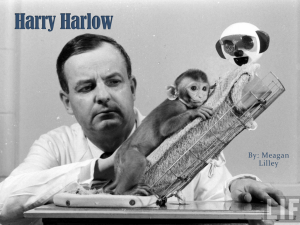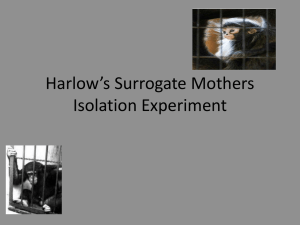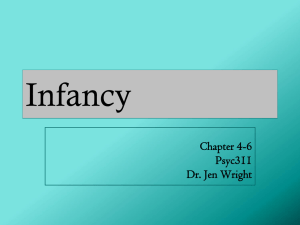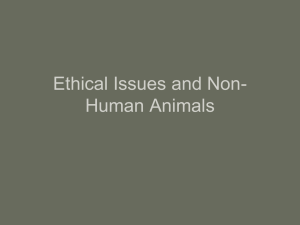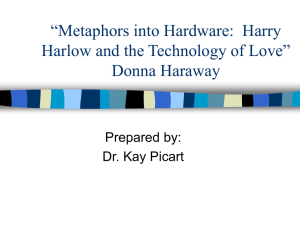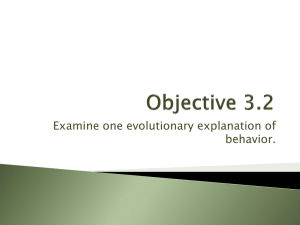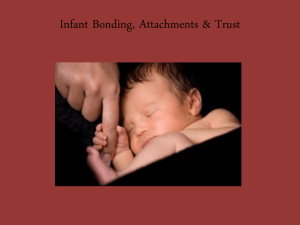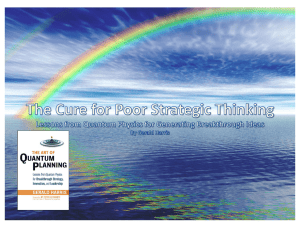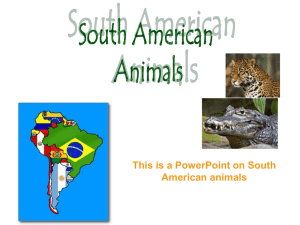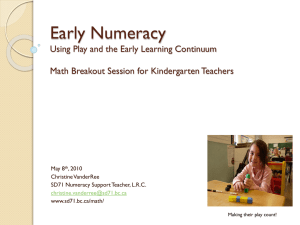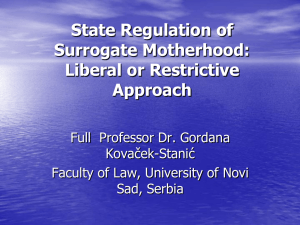nar0004-280512-0942am-Harry Harlow experiment
advertisement
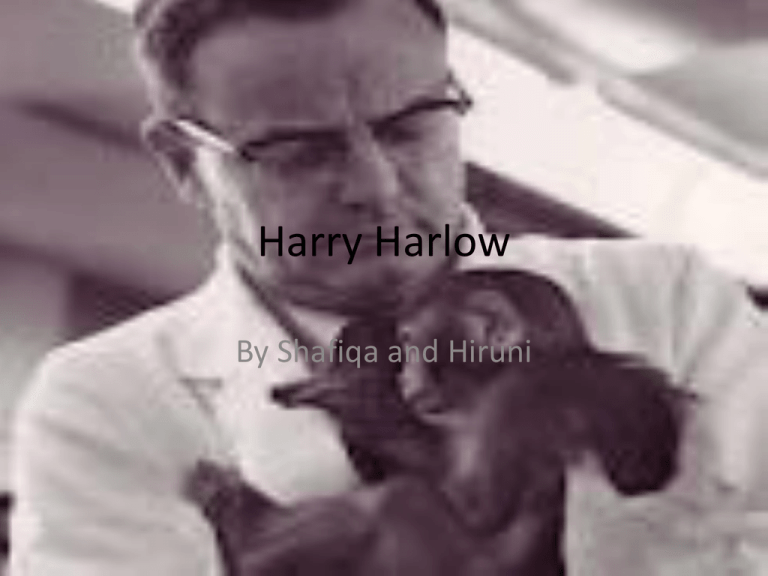
Harry Harlow By Shafiqa and Hiruni HARLOW’S EXPERIMENTS • He developed his theory on human infants in the 1950’s and 60’s • An American psychologist named Harry Harlow was conducting research on attachment in rhesus monkey. • Harlow conducted 2 other experiments. • He used a surrogate mother and an actual birth mother. • He isolated the monkeys for 3 months after then giving them a mother. • After 12 months their behaviour still stayed the same. • He used a mother made out of cloths. • • • • • • • • • Aim-to find out whether provision of food or contact comfort is more important in the infant mother attachment. Participants-eight newborn rhesus monkeys separated from their mothers immediately after birth. Procedure: group1-four monkeys isolated in cages where a cloth surrogate mother provided food and a wire surrogate mother did not. Group 2-four monkeys isolated in cage where a wire surrogate mother provided food and a cloth surrogate mother did not. Independent variable-provision of food by either a cloth or wire surrogate mother. Dependent variable-amount of contact time spent with cloth and wire surrogate mother. Results-all monkeys in both group 1 and 2 spent far more time with their cloth surrogate than they did with their wire surrogate, regardless of which provided food. Conclusion-contact comfort is more important than feeding in the formation of infant mother attachment in rhesus monkeys. Generalisation-contact comfort is likely to be a crucial factor in human infant parent attachment. Other experiments • The wire mother experiment • Fear security, and attachment Why did Harlow use the rhesus monkeys ? • Harlow says that he used these types of monkeys loved experiments and had an powerful implications for any and all separations of mothers and infants, including adoption, as well as childbearing in general. Results • Harlow concluded that “ contact comfort”, which was provided by the softness of the cloth covering, was more important than feeding in the formation of an infant rhesus monkey’s attachment to its mother. • Contact comfort was also likely to be a crucial factor in human infant- parent attachment. V:\hicj
